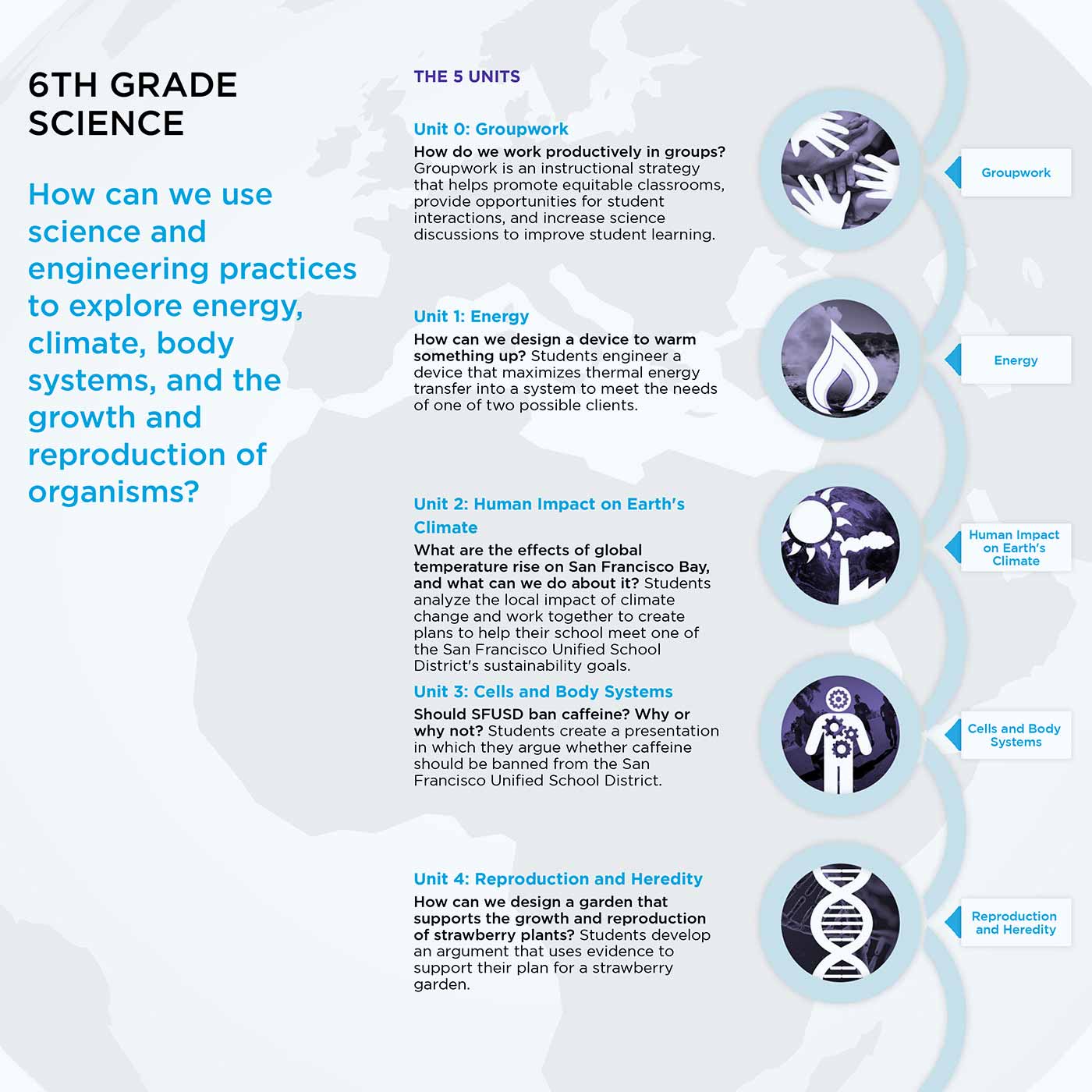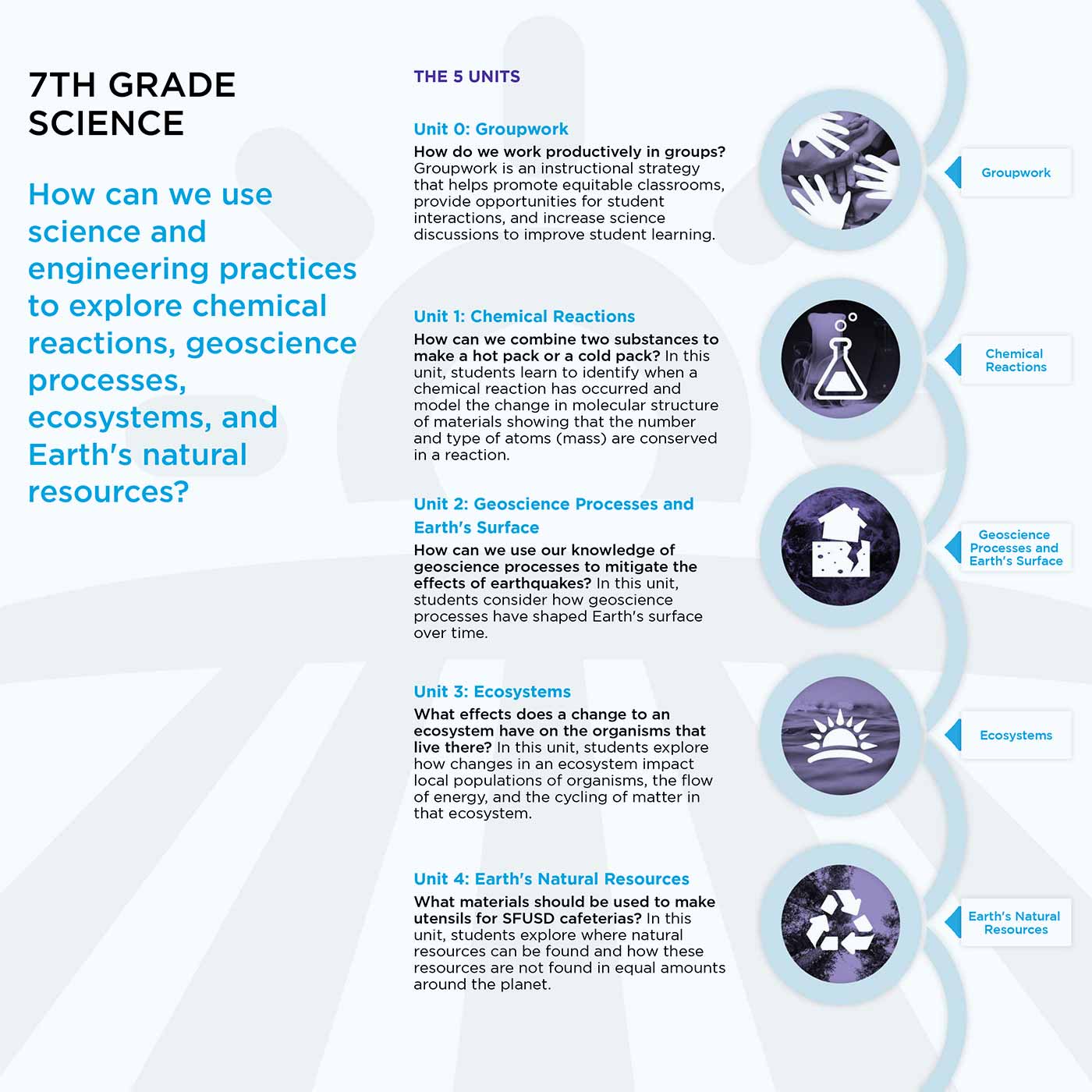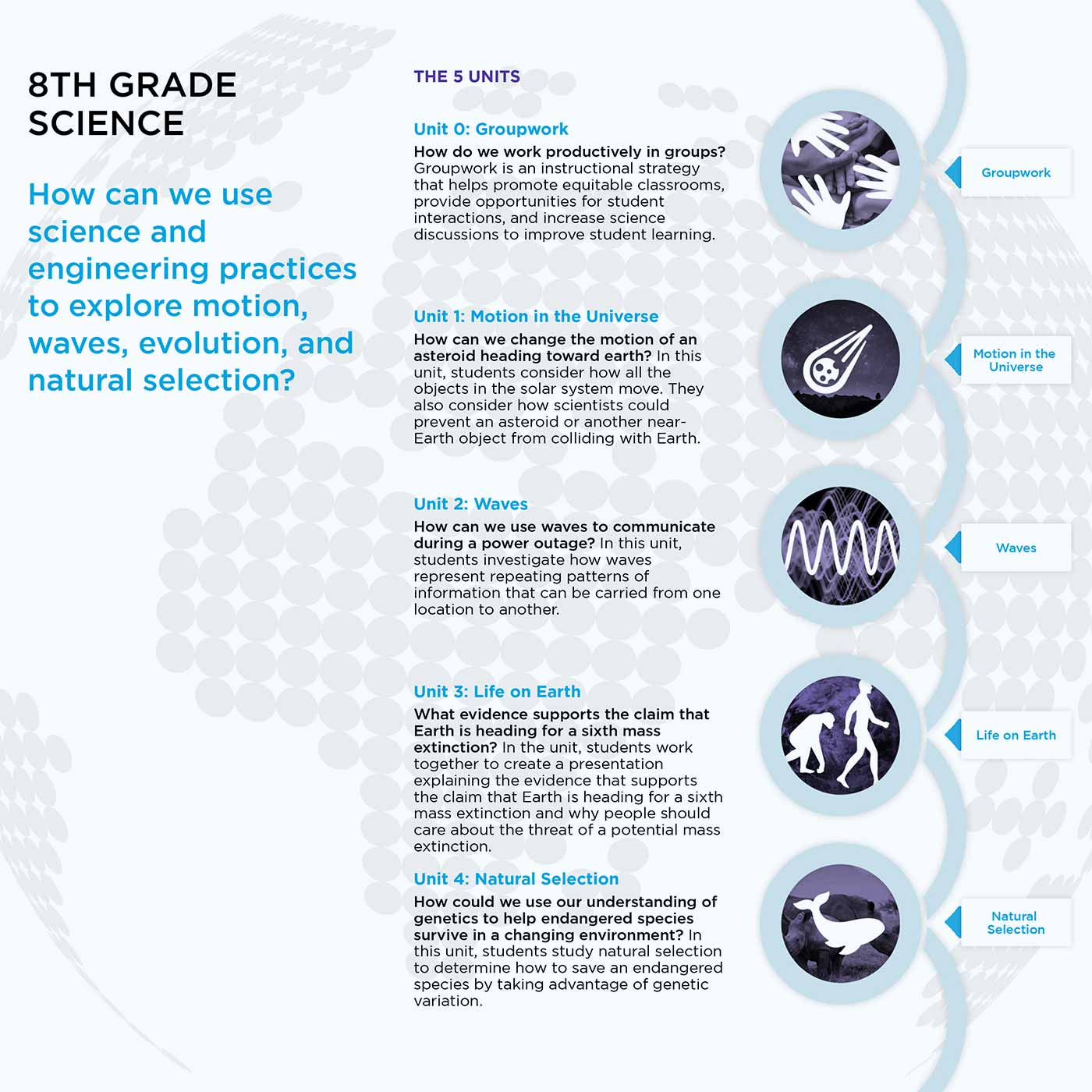Equity in Science Education
Overview
Building on this design and findings from the Learning Through Performance study, researchers collaborated with San Francisco Unified School District (SFUSD) to develop and study project-based science courses for sixth, seventh, and eighth grade. This effort, referred to as Equity in Science Education, was led by Dr. Janet Carlson at Stanford University’s Center to Support Excellence in Teaching, Devin Krugman and Dr. Renee Marcy at SFUSD, and Dr. Andrew Krumm at Digital Promise.
Principal Investigator:
Dr. Janet Carlson at Stanford University’s Center to Support Excellence in Teaching, Devin Krugman and Dr. Renee Marcy at SFUSD, and Dr. Andrew Krumm at Digital PromiseYear of Funding:
2016-2020
Curriculum
Equity in Science Education Sixth Grade Science Course
In the Equity in Science Education Sixth Grade Science Curriculum, students explore the question: How can we use science and engineering practices to explore energy, climate, body systems, and the growth and reproduction of organisms? Students have opportunities to ask questions, design investigations, and use evidence to understand how to apply core concepts such as energy, climate, body systems, and heredity to address personally relevant and environmentally-focused challenges.
The curriculum, co-developed by Stanford University and San Francisco Unified School District (SFUSD), consists of five units: an opening unit, Groupwork, which teaches students how to work as a team, and four project-based learning units with embedded performance assessments aligned with the Next Generation Science Standards. Each unit is focused on an Essential Question and includes a sequence of lessons corresponding to the research-based 5E Instructional Model, in which teaching and learning proceed through five stages: Engage, Explore, Explain, Elaborate, and Evaluate.
The Groupwork unit is based on a framework developed by the Complex Instruction Program at Stanford University and includes skill-building tasks to help students acquire the experience and tools for effective and productive groupwork. In the Energy unit, students work collaboratively to plan, build, test, and revise a device that maximizes thermal energy transfer. In the Human Impact on Earth’s climate unit, students analyze the local impact of climate change and work together to create a plan to help their school meet one of SFUSD’s sustainability goals. During the Cells and Body Systems unit, students explore how interacting body systems are affected when caffeine is consumed, and they create presentations to argue whether caffeine should be banned from SFUSD. The Heredity and Reproduction unit engages students in designing a strawberry garden for their school to learn about how traits of organisms are inherited.
Download the 6th grade science poster and print it for your class.
 Download this file (184 KB)
Download this file (184 KB) 
Download the 6th grade science poster and print it for your class.
 Download this file (184 KB)
Download this file (184 KB) Equity in Science Education Seventh Grade Course
In the Equity in Science Education Seventh Grade Science Curriculum, students explore the question: How can we use science and engineering practices to explore chemical reactions, geoscience processes, ecosystems, and Earth’s natural resources? Students have opportunities to engage in meaningful science inquiry, make arguments using evidence, develop and use models, and design and carry out group projects to understand how to apply science concepts such as geoscience processes, natural resources, properties of substances, chemical reactions, the ecology of organisms, and ecosystem services.
Similar to the sixth grade course, this course begins with the Groupwork unit. In the Chemical Reactions unit, students investigate physical and chemical changes as well as molecular structures, and work together to design a hot or cold pack that either releases or absorbs thermal energy. In the Geoscience Processes and Earth’s Processes unit, students explore continental drift and plate tectonics to work collaboratively to make a location recommendation for a housing development in San Francisco taking into account soil and rock content, and distance from plate boundaries. During the Ecosystems unit, students collaboratively engage in inquiry around food webs, ecosystem services, matter and energy flow to construct a model that explains how matter cycles and energy flows in a specific ecosystem found in the San Francisco Bay Area. The Earth’s Natural Resources unit engages students in resource limitation, conservation and ecosystem services and culminates in a group project presentation in which students identify the materials they think would be best to make the eating utensils that are used in SFUSD cafeterias.
Download the 7th grade science poster and print it for your class.
 Download this file (112 KB)
Download this file (112 KB) 
Download the 7th grade science poster and print it for your class.
 Download this file (112 KB)
Download this file (112 KB) Equity in Science Education Eighth Grade Course
In the Equity in Science Education Eighth Grade Science Curriculum, students explore the question: How can we use science and engineering practices to explore motion, waves, evolution, and natural selection? Students engage in scientific inquiry, conduct authentic and place-based investigations, and design and carry out group projects to understand the application of science concepts such as the solar system, force, motion, waves, energy, extinction, genetics, endangered species, and climate change.
Similar to the sixth grade course, this course begins with the Groupwork unit. In the Motion in the Universe unit, students investigate forces and motion as well as the solar system, and work together to prepare a news article that describes a solution to prevent an asteroid from colliding with Earth using a contact or a non-contact force. In the Waves unit, students explore the properties of waves to work collaboratively to create a presentation in which they describe a plan to communicate with neighbors using sound and light waves during a power outage. During the Life on Earth unit, students collaboratively engage in inquiry around evidence of life, organisms and mass extinctions to create a presentation explaining the evidence of extinctions and why people should care about the threat of a potential mass extinction. The Natural Selection unit engages students in climate change, genetics, and population ecology and culminates with students constructing a visual explanation for how climate change has led to the endangerment of their selected San Francisco Bay Area species.
Download the 8th grade science poster and print it for your class.
 Download this file (390 KB)
Download this file (390 KB) 
Download the 8th grade science poster and print it for your class.
 Download this file (390 KB)
Download this file (390 KB) 

